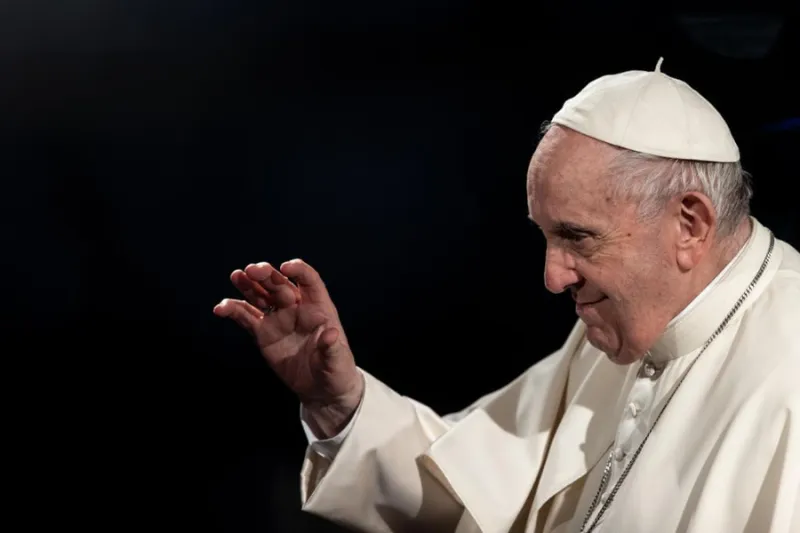 ‘Immaculate Conception’ by Peter Paul Rubens, circa 1628. / null
‘Immaculate Conception’ by Peter Paul Rubens, circa 1628. / null
CNA Newsroom, Dec 7, 2022 / 14:00 pm (CNA).
While the dogma of the Immaculate Conception would not be proclaimed until 1854, the Church in Spain has long venerated Our Lady’s Immaculate Conception.
In 1585 a miracle attributed to the Immaculate Conception allowed the Spanish troops to win the Battle of Empel in Holland.
As part of the Holy Roman Empire’s House of Habsburg in the 16th century, Spain governed what was known as the Spanish Netherlands. However following the Protestant Reformation, the Protestant provinces revolted against Spanish rule, sparking a prolonged conflict for control of the region known as the Eighty Years’ War.
On the night of December 7-8, 1585, the situation of the troops of Emperor Philip II of Spain looked desperate.
The Tercio Viejo de Zamora infantry regiment commanded by Francisco Arias de Bobadilla was trapped by enemy forces at the Empel dike off the island of Bomel. The morale of his troops was low due to hunger and cold.
Bobadilla called his captains and ordered them to pray with faith so that God would deliver them from the dreadful fate that awaited them.
Soon, a soldier who was trying to dig a hole to take refuge from the wind and cold uncovered a wooden tablet with the image of the Immaculate Conception painted on it. Immediately, the image of Our Lady was taken in a procession to a nearby church.
After this act of devotion of the troops, a strange, miraculous event occurred: the surface of the waters froze almost in an instant. The Spanish troops were able to walk on foot over the ice and defeat the rebellious Dutch Protestant forces.
The same day, the Immaculate Conception was proclaimed patroness of the infantry of Flanders and Italy. The Virgin’s patronage of all the Spanish infantry, the oldest in the world, did not become official until 1892 by a Royal Order of the regent María Cristina.
The dogma and Spain
On Dec. 8, 1854, Pope Pius IX proclaimed the dogma of the Immaculate Conception of the Virgin Mary through the bull Ineffabilis Deus, declaring that “the doctrine which holds that the most Blessed Virgin Mary, in the first instance of her conception, by a singular grace and privilege granted by Almighty God, in view of the merits of Jesus Christ, the Savior of the human race, was preserved free from all stain of original sin, is a doctrine revealed by God and therefore to be believed firmly and constantly by all the faithful.”
But long before that, Spain was especially noted for its defense of the Immaculate Conception of Mary.
The most remote precedent is found with the Visigothic monarch Wamba, who distinguished himself at the XI Council of Toledo in 675 as “defender of the Immaculate Conception of Mary.”
King Felipe IV, who reigned from 1621 to 1640, urged Pope Gregory XV to proclaim the dogma, though without success.
In 1761, King Carlos III established the “universal patronage of Our Lady of the Immaculate Conception in all the Kingdoms of Spain and the Indies.”
The Order of Carlos III has been the highest civil decoration awarded in Spain since 1771. Its emblem is an image of the Immaculate Virgin.
The statue located in the Spanish Plaza in Rome was placed there in view of the defense of this Marian dogma by the Spanish through the centuries.
The privilege granted to Spanish priests
In the 19th century, a special privilege was granted to the priests of the Church in Spain to wear a chasuble of the purest shade of blue on the solemnity of the Immaculate Conception.
This is a notable exception, since the General Instruction of the Roman Missal establishes that the liturgical colors are white, green, red, violet, black and rose.
The use in Spain of the blue chasuble, however, has been on record since the 17th century, long before the proclamation of the dogma. Pope Pius VII first recognized it in 1817 for the Seville Cathedral for the feast of the Immaculate Conception and its octave.
This privilege was extended to the entire Seville archdiocese in 1879. Four years later, it was extended to all the dioceses of Spain.
In 1962 it was established that the liturgical vestments of this color were to be used in Spain only on the day of the solemnity and in the votive Masses of the Immaculate Conception.
This story was first published by ACI Prensa, CNA’s Spanish-language news partner. It has been translated and adapted by CNA.
[…]






Interfaith prayer is a meaningful initiative. The community of Sant’Egidio is serving humanity with dedication and distinction. May their tribe increase.
Really? What does it mean?
For the Christens persecuted worldwide by those who deny the Blessed Trinity, the Incarnation, who worship demons that if named cause censurship?
For Catholics kicked out of Churches by the 2nd Bishop in White because they pray in Latin – first in China, and now Worldwide: what does it mean?
What does it mean to see the once honourable Catholic Church confirming gnostics, heretics, and those worshiping false idols in their error?
Simpleton headline writers, and others, continue to equate “interreligious” with the inventive non sequitur: “interfaith.” Religious beliefs are one thing; the unique faith in the person of incarnate Jesus Christ is quite another.
From their sites, it’s clear that Sant’ Egidio, itself, knows the difference. As for the spirit of Saint Francis, what was the purpose for his famous visit in A.D. 1219 with Sultan Malek al-Kamil at Damietta on the Nile Delta, then under siege by an army of the Fifth Crusade?…
The purpose was conversion, not the sharing of tea in a flat-earth dialogue of interreligious equivalency. So, without implying such equivalency, in the Roman Colosseum let there be interreligious prayer for peace. (At least it’s not the twelve-niched, polytheistic and now secularized pantheon!) But for the global spectators, also let there by some understanding and indication of the Christian Faith.
And, even some anti-cancel culture curiosity about the ins and outs of real history. In the Paradiso, Canto XI, Dante says that St. Francis sought martyrdom and that failing this he left; and implies that the Sultan might not have been attracted to Lady Poverty. Later in the mid-13th century, and fearful of the Mogul invasions, other Franciscans made their way to Mongolia (where there is now a newly minted Catholic cardinal!) in unsuccessful efforts to convert the Khan, and with the remote possibility of even joining in an alliance against Islam. One of these (John of Pian de Carpine, 1180?-1252) had been a companion of St. Francis (See Daniel Boorstin, “The Discoverers”, 1983).
The present “Francis” presented bishops to the World from the Amazon proudly announcing in his name that they “had never committed a single baptism.”
Proselytism being a “crime” in Freemasonry and a “Sin” in post-catholic Bergoglioism – not that there could possibly be even a remote connection – there should be no risk of any baptisms at the Colosseum – to the great relief to all of Francis’ “Sin-OD” friends. Perish the thought! This is the Francis who begs Anglican bishops NOT to Convert…